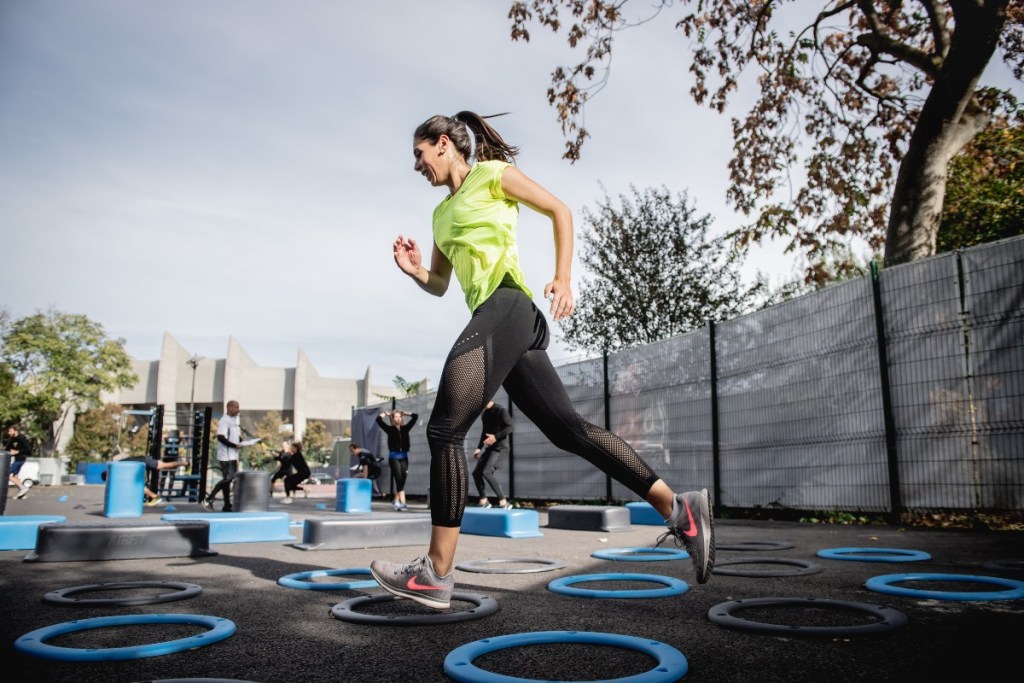Running is just about the most accessible workout there is. Provided you don’t have any conditions that prevent you from participating in this type of exercise, all you need to do is lace up your sneakers, walk outside, and start running.
If only it were that easy in practice. Starting a new routine can be difficult. Perhaps you work long hours and are constantly tired, or maybe you’re just struggling to find motivation. Sometimes, we start off with a running plan that’s too ambitious, get injured or discouraged, and stop. The key is to get into a routine that you can maintain. It may feel like a lofty goal, but it’s absolutely possible.
Consider this beginner’s running plan your first step.

Set a goal
Setting specific goals, such as “I want to run a 5K” or “I want to be able to run for 30 minutes without stopping,” and writing them down makes you more likely to achieve them, according to one study. The same study also found that people were more successful in achieving their goals if they told their friends about it and sent them weekly updates. Before starting your running plan, find a trusted friend or two who will cheer you on and hold you accountable. If you want a support group filled with other runners, start or join a fit fam by signing up for an app such as Strava to track and celebrate each other’s progress.
Start small with walking
We know you’re looking to start a running routine; however, if you haven’t exercised in a while, consider walking before you run. There’s a catch here, though: These walks shouldn’t be your leisurely stroll around the block. Save those for when you’re trying to de-stress. Instead, build cardiovascular endurance by taking a brisk walk five days per week.
So what exactly is a brisk walk? It gets your heart rate into a target zone, which, according to the American Heart Association, varies by age. A 20-year-old’s target heart rate is between 100 to 170 beats per minute, thirty-year-old adults should aim for a rate between 95 and 162 beats per minute, 35-year-olds should aim for 93 to 157 beats per minute, and so on.

Add some running to your routine
After a week or two of brisk walking, start mixing running into your workouts at an intensity that matches your fitness level and goals. For example, if your goal is to be able to run for 30 minutes without stopping, try walking for five minutes and running for five minutes for a total of 30 minutes. The next week, walk for 10 minutes and run for five minutes for 30 minutes. Then, run for 20 minutes, walk for five minutes, and run for five minutes. The following week, try running the full 30 minutes.
If your goal is to run a 5K (3.1 miles), increase your mileage per week by 10 percent to prevent injury. Start by running 1-1.5 miles three times per week and slowly work your way up to a 5K run.
Don’t forget strength training
Running is a great workout, but it isn’t the only key to success. Strength training is also vital to your health, fitness, and performance as a runner, preventing injury and even reducing the risk of cancer and heart disease. For runners, strength training can also improve form and lead to more efficient workouts. To keep yourself in tip-top shape, try squats, lunges, and calf raises to strengthen the legs that carry you during your runs. Runners who strength train two to three times per week typically see the best results.
Overcome adversity
Running should be something you enjoy — it’s a hobby, not a job. That said, sometimes, you may have a bad run or miss your alarm and have to skip a day. Try not to be so hard on yourself. Remember: It’s not all or nothing. If you missed a workout, call it a rest day (they’re important in preventing injury). Then, rework your schedule to get back on track. If you couldn’t run the full 20 minutes you set out to do and had to walk, know that’s okay too. The important thing is to listen to your body and follow a routine that works best for your lifestyle. Get those running shoes ready, and we’ll see you on the trail.
BlissMark provides information regarding health, wellness, and beauty. The information within this article is not intended to be medical advice. Before starting any diet or exercise routine, consult your physician. If you don’t have a primary care physician, the United States Health & Human Services department has a free online tool that can help you locate a clinic in your area. We are not medical professionals, have not verified or vetted any programs, and in no way intend our content to be anything more than informative and inspiring.



